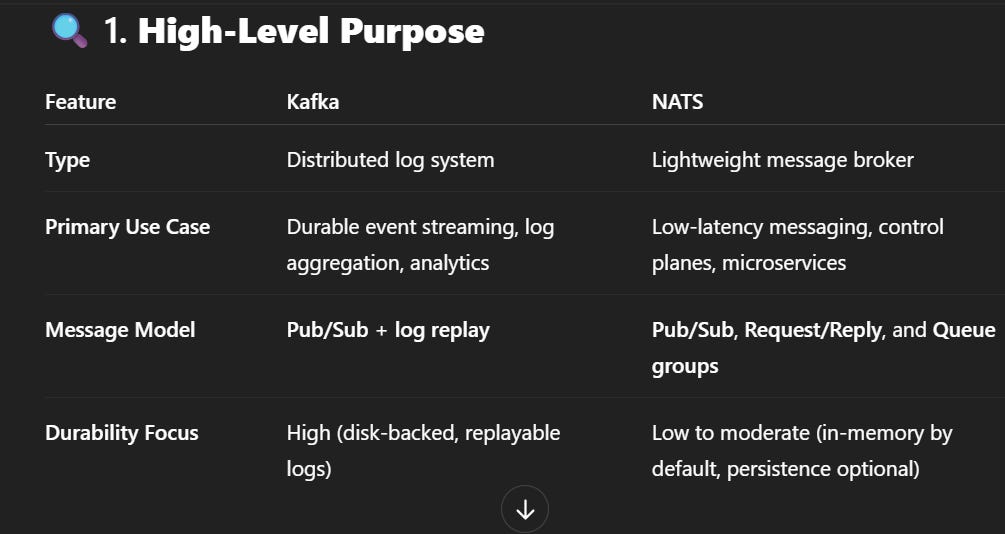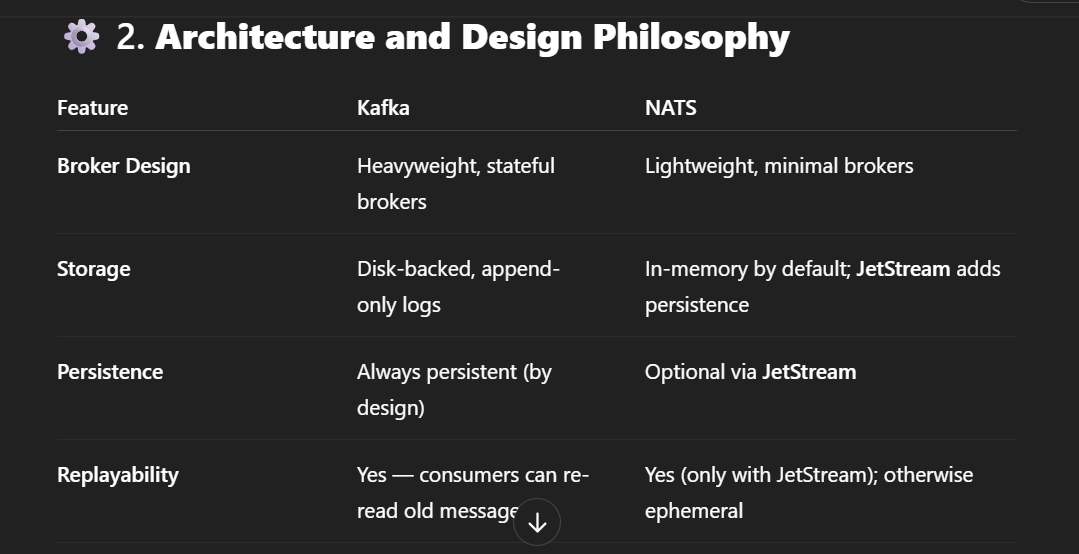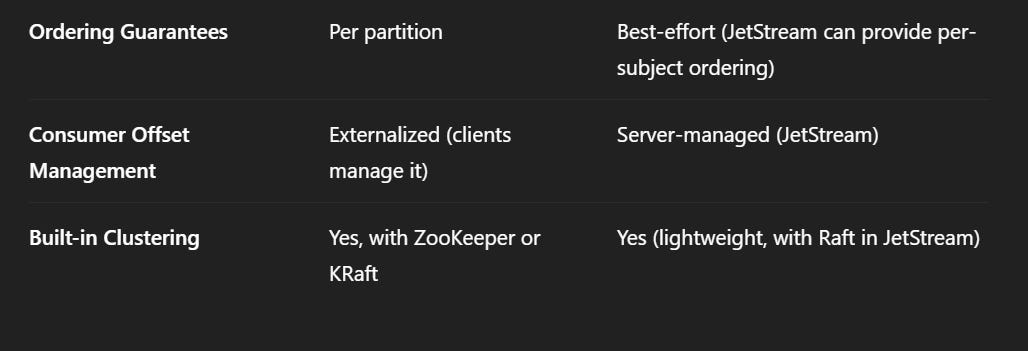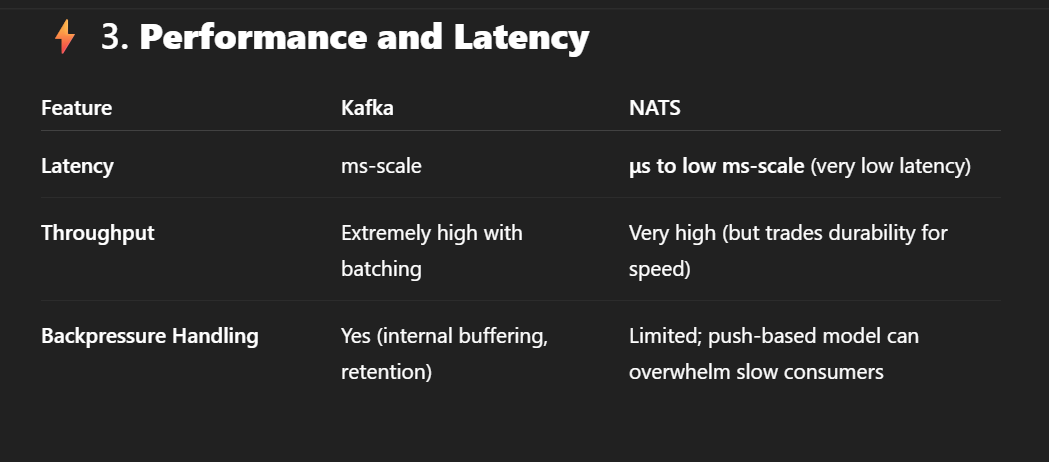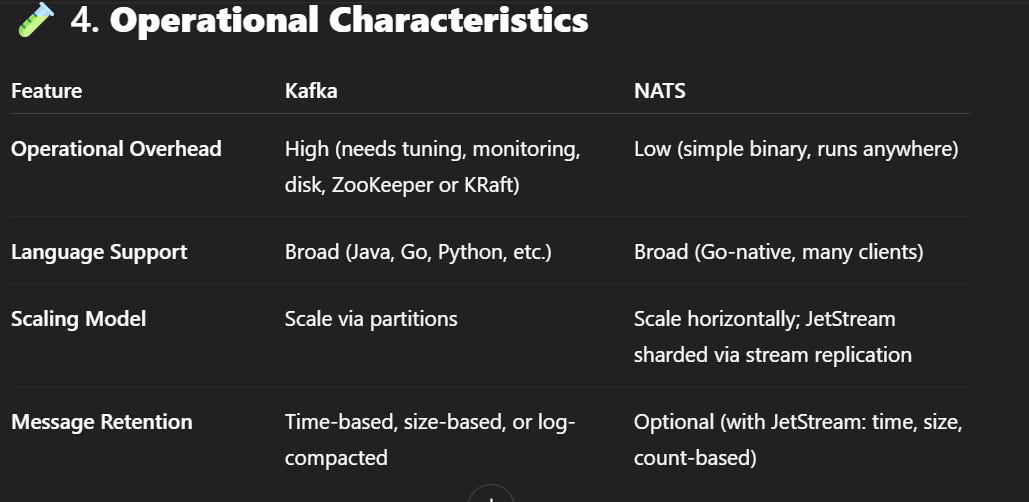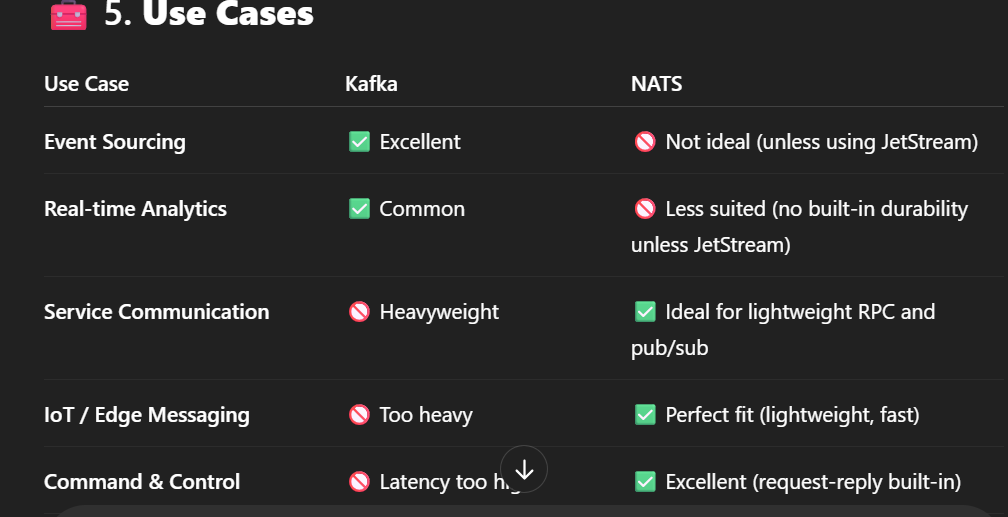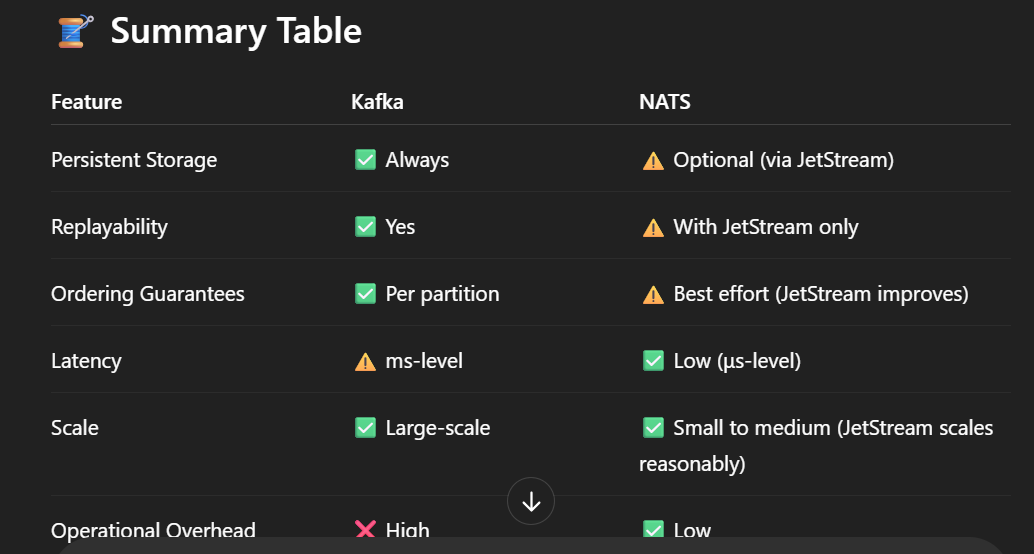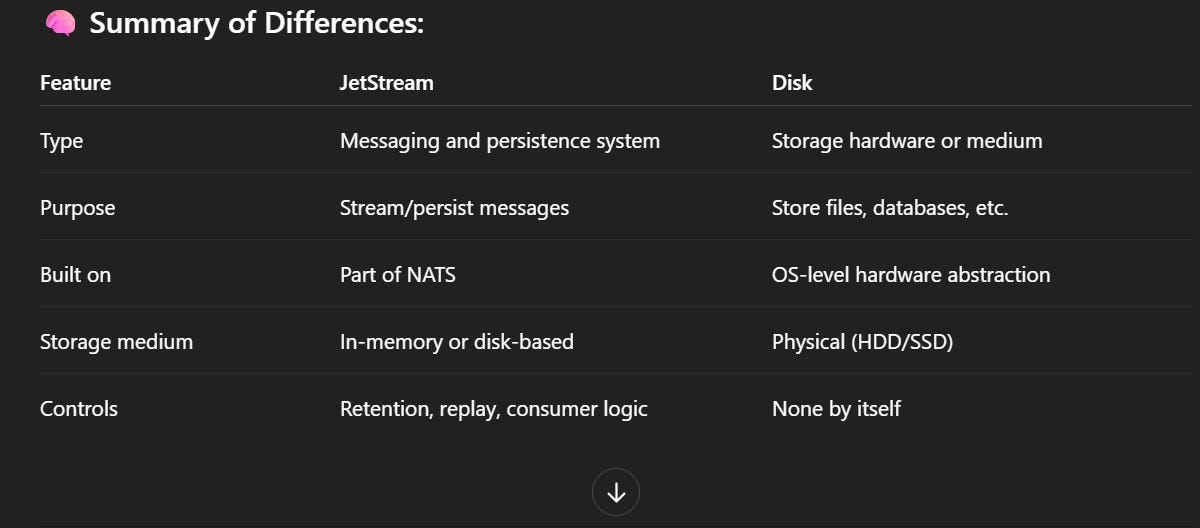Let's contrast between Kafka and NATS
A detailed description of Apache Kafka and NATS, including their architecture, core features, and intended use cases:
🐘 Apache Kafka – Distributed Event Streaming Platform
📌 What is Kafka?
Apache Kafka is a distributed event streaming platform designed for building real-time data pipelines and streaming applications. It is built to ingest, store, and process high volumes of event data with durability, scalability, and fault tolerance.
🏗️ Core Components:
Producer: Sends data (events) to Kafka topics.
Consumer: Subscribes to topics and processes incoming data.
Broker: Kafka server that stores and serves data to consumers.
Topic: Named stream where records are written by producers and read by consumers.
Partition: A topic is divided into partitions for scalability and parallelism.
ZooKeeper / KRaft: Manages broker metadata (being replaced by KRaft mode in newer versions).
💡 Key Features:
Durable log storage: Messages are persisted to disk and can be replayed.
High throughput: Scales horizontally with partitioned topics and batched I/O.
Consumer groups: Allow horizontal scaling of consumers and parallel processing.
Exactly-once semantics (EOS): Ensures no duplication or data loss (requires config).
Log compaction: Keeps only the latest value per key, useful for changelog-style data.
✅ Best Use Cases:
Real-time analytics and monitoring
Event sourcing and audit logs
Log aggregation and ingestion into data lakes
Microservice communication (though heavier than message brokers)
Streaming data pipelines (e.g., Kafka + Flink/Spark)
⚡ NATS – Lightweight Messaging System
📌 What is NATS?
NATS is a high-performance, lightweight, open-source messaging system designed for simple, scalable, and fast communication between services in a distributed system. It supports multiple communication patterns like pub/sub, request/reply, and queueing.
🏗️ Core Components:
NATS Server: Lightweight broker that routes messages between clients.
Client: A producer, consumer, or service that connects to the server.
Subject: Named channel for pub/sub communication.
Queue Group: Enables load-balanced consumers (only one receives a message).
JetStream (optional): Adds persistence, replay, stream management, and delivery guarantees.
💡 Key Features:
Ultra-low latency: Message delivery within microseconds.
Minimal overhead: Single binary, small memory footprint.
Multiple messaging patterns:
Pub/Sub
Request/Reply
Load-balanced Queue Groups
JetStream:
Persistence
Message replay
Stream consumers
Acknowledgements and delivery guarantees
Auto-pruning of old messages (in memory by default)
✅ Best Use Cases:
Microservices communication
Control plane messaging (e.g., Kubernetes controllers)
IoT and edge messaging
Request/response or RPC-style workloads
Event notification systems
Real-time systems with low-latency requirements
🔍 1. High-Level Purpose
🧠 Final Thoughts
Choose Kafka when you need durability, replayability, event logs, and big data pipelines.
Choose NATS when you need low-latency messaging, high fan-out, lightweight service communication, or IoT edge connectivity.
Use NATS JetStream if you want persistence and streaming in a simpler, faster package — though it's still not a full Kafka replacement for heavy analytics workloads.
✅ JetStream
JetStream is a messaging and persistence layer built into the NATS server (a high-performance messaging system). It provides features like:
Message streaming and persistence
At-least-once delivery
Durable consumers
Replay of messages
Message acknowledgment
Retention policies (e.g., limits by time, size, or count)
JetStream stores messages in memory or on disk depending on configuration, and enables you to stream, persist, and replay messages across distributed systems.
✅ Disk
"Disk" usually refers to physical or virtual storage hardware (like SSDs or HDDs), or the storage media where data is saved. It can be:
Used by JetStream to persist messages.
Used by databases, file systems, and other services.


